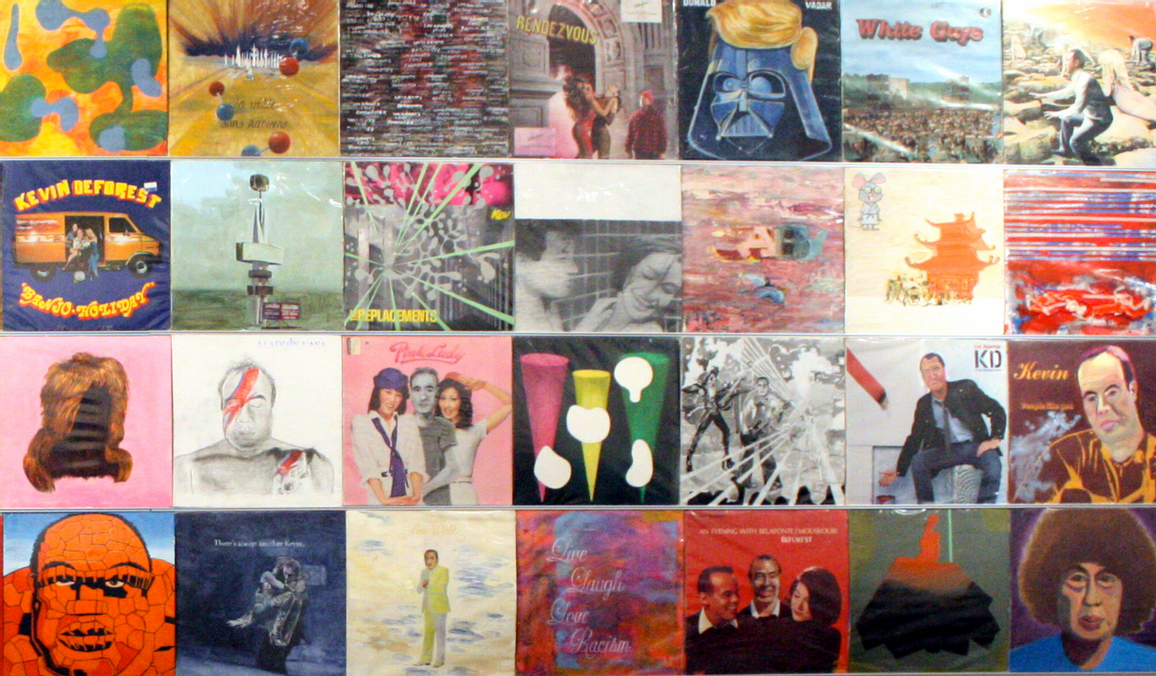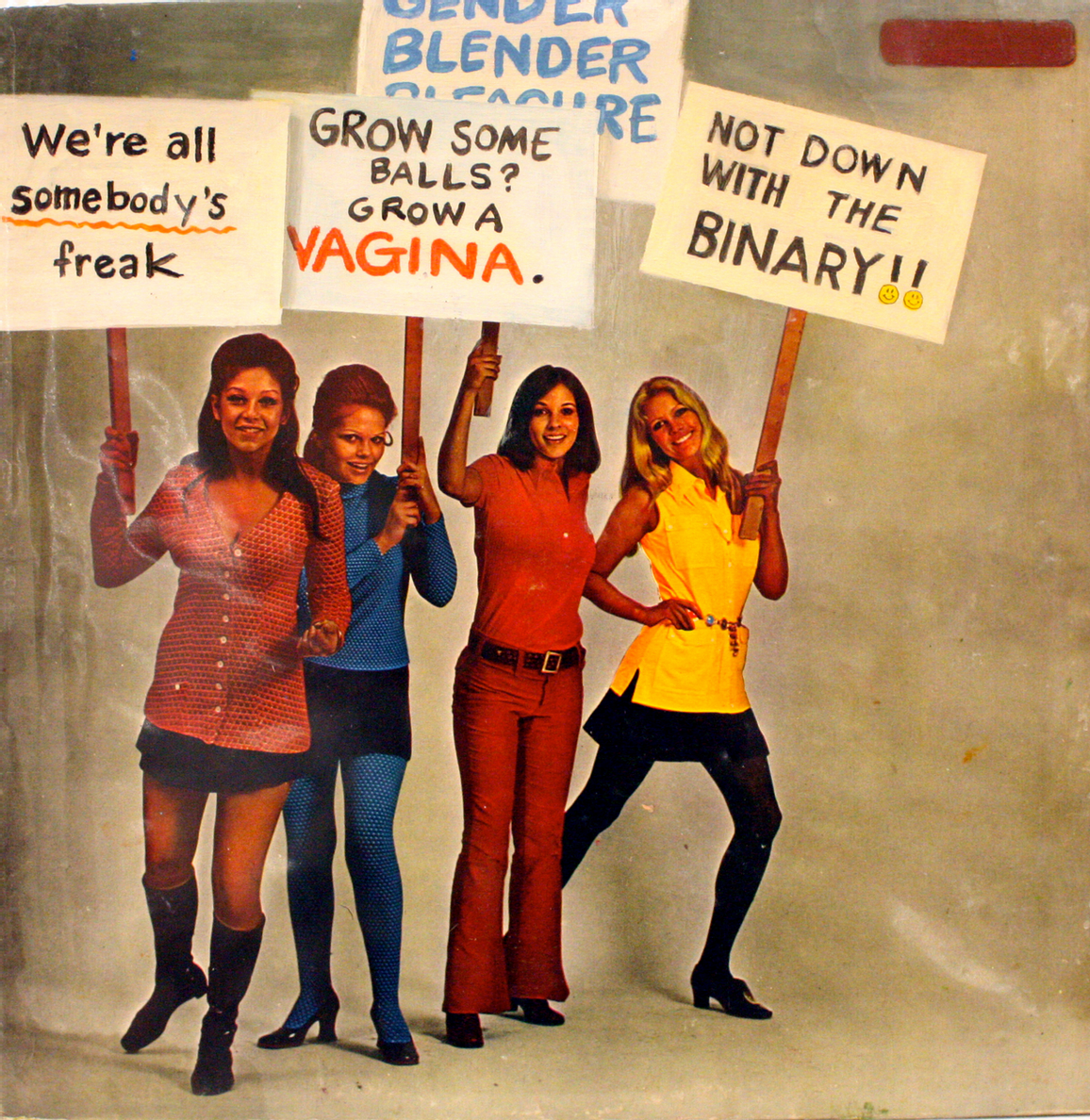
The Record Shop: Kevin Ei-ichi deForest

The Record Shop embraces deForest’s passion for music and collecting, the vinyl record jackets offering themselves as the perfect medium for his artwork. Using these pop cultural cast offs, icons of an almost forgotten era in an increasingly digital age, deForest alters them, sometimes a little, other times a lot, to make them reflective of an identity that is never stagnant and always changing.[3] The obsolete is once more made relevant and engaging, recycled into a new life in deForest’s capable hands.[4]

The Record Shop, currently comprised of some 298 record jackets, is set up to immerse visitors in an authentic music store experience. Records are displayed across the walls of the gallery and in several milk crates placed upon pedestals where the audience may flip through the jackets, experiencing the nostalgia of browsing through an actual record shop. Many of the labels, terms, and politics of deForest are poignantly displayed across the jackets. Upon closer inspection, visitors will notice Kevin’s image carefully inserted into the album art. Visitors are encouraged to look over each album with care; the changes at times are radical or at times subtle.

This on-going body of work, first shown in 1994, is a living reflection of the man behind the art. The Record Shop has changed and grown over the years, some pieces being lost to collectors, but the body is always growing.[6] The records are personal reflections of deForest’s interests and ambitions.[7] The genius of The Record Shop goes to show that the whole really is greater than the sum of its parts. Our identities are comprised of a multitude of things. We are more than what we initially present ourselves to be, and so are those around us.

www.kevindeforest.ca/contact
[2] Baby Boomers are loosely defined as people born in the early/mid 1940s to early/mid 1960s, and Generation X as those born in the early 1960s to early 1980s.
[3] Western, Jenny. “Kevin deForest: Fake ID”, pgs. 12 – 15. Kevin Ei-ichi deForest: FAKE ID, Exhibition Catalogue, 2006. Art Gallery of Southwestern Manitoba.
[4] deForest, Kevin Ei-ichi. Personal interview. (E-mail). 15 January 2018.
[5] Ibid.
[6] Ibid.
[7] Sirmans, Franklin. “Fear (and not quite loathing it…).” Pgs. 18 – 19. Kevin Ei-ichi deForest: FAKE ID. Exhibition Catalogue, 2006. Art Gallery of Southwestern Manitoba.
Kevin Ei-ichi deForest is an Assistant Professor in Brandon University’s Department of Visual and Aboriginal Art. Born in Winnipeg in 1962, he now currently resides in Brandon, Manitoba. He holds Bachelor’s degrees in Environmental Studies (1983) and Fine Arts (1986) from the University of Manitoba, and a Master’s of Fine Art (1994) from Concordia University. He has completed residencies in Brooklyn, Amsterdam, and Kyoto. DeForest’s work has been shown in solo exhibitions across Canada, the Netherlands, and the United States of America since 1988, and in group exhibitions since 1986 across Canada, the United States of America, the Netherlands, Italy, and Mexico. His work embraces his cultural heritage as a suburban Canadian from the prairies of Japanese and Swiss descent, as he explores identity.
